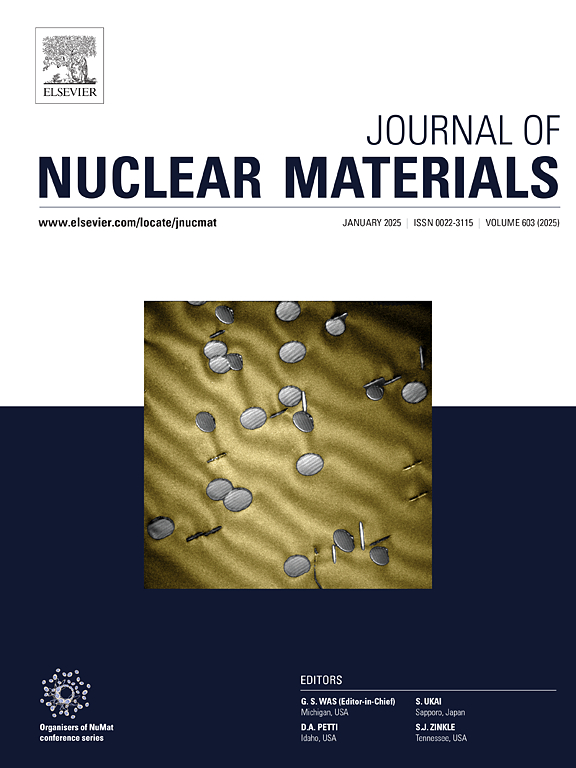Some practical methodologies to assess the overall high temperature (one-sided) steam oxidation protectiveness of chromium-based coatings on a zirconium-based substrate, as Enhanced – Accident tolerant (Nuclear) fuels (E-ATF) claddings
IF 2.8
2区 工程技术
Q3 MATERIALS SCIENCE, MULTIDISCIPLINARY
引用次数: 0
Abstract
Among various Enhanced-Accident Tolerant nuclear fuel claddings studied worldwide, Cr-coated Zr-based claddings are largely considered as a reference with evolutionary design and resulting ability to improve the high-temperature (HT) oxidation resistance. Most of the numerous studies carried out so far on the HT oxidation behavior of coated claddings have focused on detailed localized post-mortem examinations. The present paper aims to suggest complementary and sufficiently simple experimental methodologies to evaluate the overall protectiveness of Cr-based coated materials upon HT steam oxidation. The different proposed approaches have been assessed by comparing their capacity to characterize the Cr-coating loss of protectiveness and the associated oxygen diffusion into the sub-coating metallic wall-clad thickness. The latter is then compared to the results obtained by “more direct” Electron-Probe-Micro-Analysis measurements. The overall oxygen ingress into the tested coated claddings, evaluated by different proposed approaches, can be correlated to the Post-Quenching strength of the claddings, using a novel “Equivalent Cladding Reacted” parameter - called “Equivalent Chromium Reacted” ECrR – recently developed at CEA.
求助全文
约1分钟内获得全文
求助全文
来源期刊

Journal of Nuclear Materials
工程技术-材料科学:综合
CiteScore
5.70
自引率
25.80%
发文量
601
审稿时长
63 days
期刊介绍:
The Journal of Nuclear Materials publishes high quality papers in materials research for nuclear applications, primarily fission reactors, fusion reactors, and similar environments including radiation areas of charged particle accelerators. Both original research and critical review papers covering experimental, theoretical, and computational aspects of either fundamental or applied nature are welcome.
The breadth of the field is such that a wide range of processes and properties in the field of materials science and engineering is of interest to the readership, spanning atom-scale processes, microstructures, thermodynamics, mechanical properties, physical properties, and corrosion, for example.
Topics covered by JNM
Fission reactor materials, including fuels, cladding, core structures, pressure vessels, coolant interactions with materials, moderator and control components, fission product behavior.
Materials aspects of the entire fuel cycle.
Materials aspects of the actinides and their compounds.
Performance of nuclear waste materials; materials aspects of the immobilization of wastes.
Fusion reactor materials, including first walls, blankets, insulators and magnets.
Neutron and charged particle radiation effects in materials, including defects, transmutations, microstructures, phase changes and macroscopic properties.
Interaction of plasmas, ion beams, electron beams and electromagnetic radiation with materials relevant to nuclear systems.
 求助内容:
求助内容: 应助结果提醒方式:
应助结果提醒方式:


